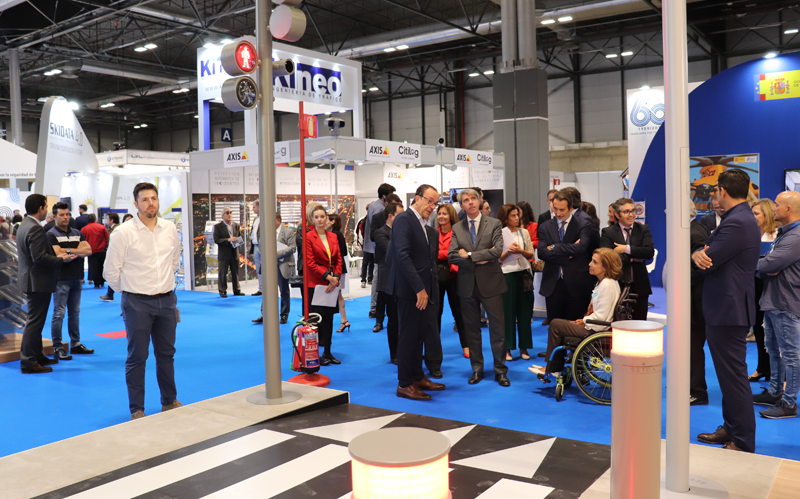Luminous beacons along the pavement that replicate the changing colours of traffic lights, for pedestrians who do not look up from their mobile phone, and an intelligent lighting system that adapts by changing the type of light to the circadian rhythms of people, are just a few of the technological solutions presented by Setga at the recent TRAFIC fair 2019, dedicated to safe and sustainable mobility.
“We have created this type of traffic light reinforcement to avoid accidents at pedestrian crossings”, explains Ángel González Calvo, director of Setga, a Galician company specialising in lighting, signage and street furniture, that displayed their beacons and traffic light bollards to visitors to the fair, including Pere Navarro, director of the General Directorate of Traffic, and Ángel Garrido, Minister of Transportation and Mobility for the Community of Madrid.
Sequential repeater for zebra crossings without traffic light
Improving road safety is one of the objectives of the company, that has developed a system that combines specific lighting and light signalling in street lamps for zebra crossings which do not have traffic lights.
The light column has a sequential repeater, a light signalling recessed in the lamppost at a medium height, which allows drivers to recognise the crossing from a distance of about 150 metres. Once a driver approaches, the light column has a light reinforcement that projects the light in the vertical plane of the pedestrian “highlighting and bringing the pedestrian body to the foreground, which makes the driver distinguish it in a clear way, avoiding accidents,” says the director of Setga.
Lighting that adapts to people’s biological clock
One of the newest systems exhibited at the fair is the Circadionic dynamic lighting system, based on adapting lighting to the circadian rhythms of people, moving from a cooler to a warmer colour depending on the time of day.
“On a winter day at six o’clock in the afternoon, when there is still a lot of activity in the street, a white light with a lot of blue component is required,” explains Ángel González. “As the hours go by, our body secretes the relaxation hormone and Circadionic changes to a warmer light that is also much less polluting,” adds the director of Setga.



